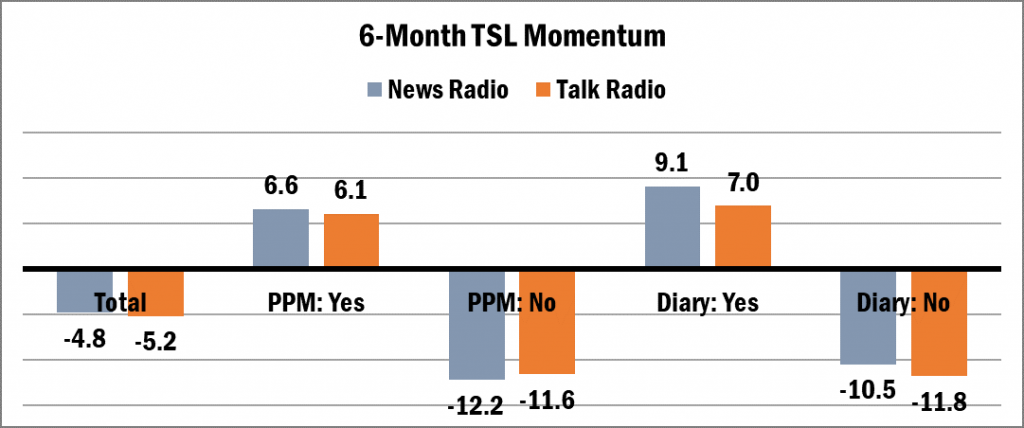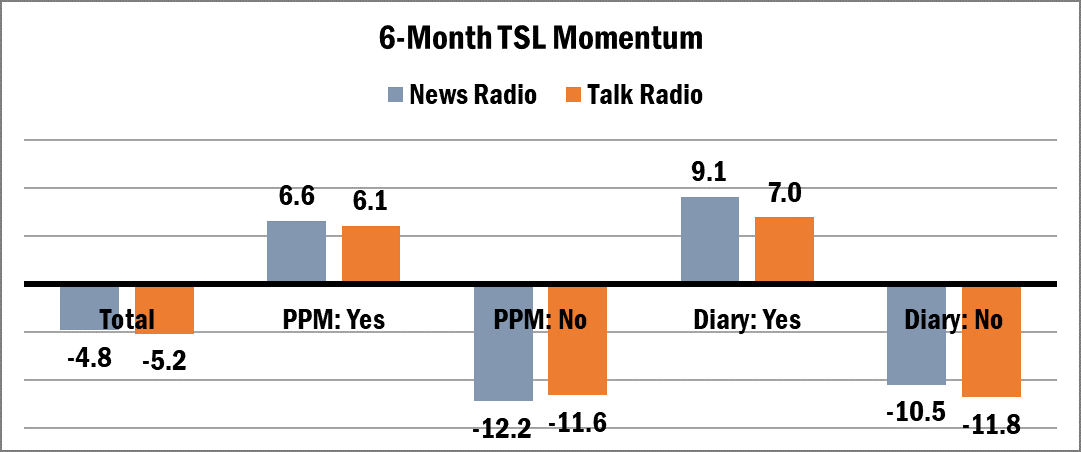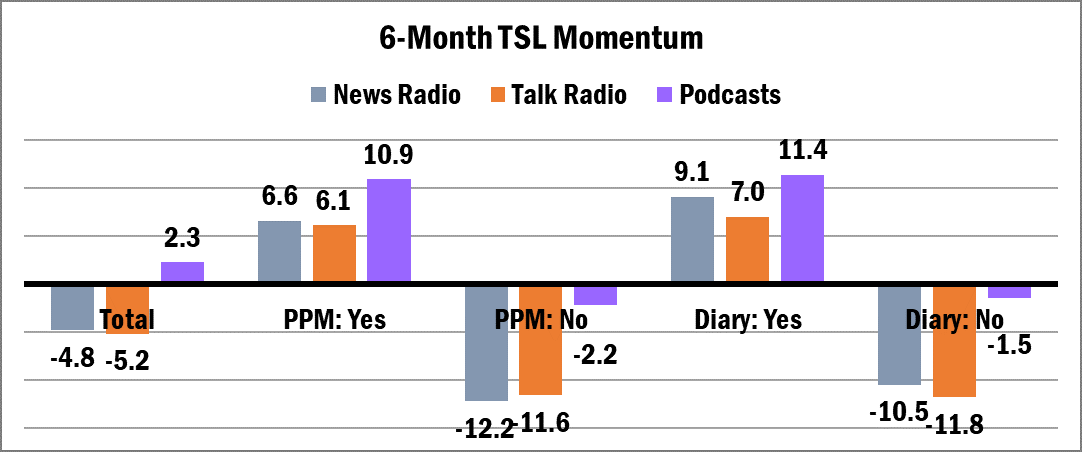Are You Listening More, the Same Amount or Less Than You Were Six Months Ago? Part II

Last week we shared some early results from NuVoodoo Ratings Prospects Study Ten, our latest study of nearly 3,000 respondents ages 14-54 across all PPM markets. We showed 6-month TSL momentum results for FM Music Radio compared to Spotify and Pandora (TSL momentum: the percentage who say they’re now listening more to a source than they were 6 months ago minus those who say they’re listening less to a source than they were 6 months ago). We were happy to show that TSL momentum for Music on FM radio is positive overall – and even more positive among the subsamples that model as being likely compliers in either metered or diary ratings methodologies.
This week, we’re looking at TSL for spoken word sources. When it comes to News Radio and Talk Radio, the overall TSL momentum numbers are down among these 14-54’s. The good news is the numbers flip positive among the “radio-active” opinion leaders likely to end up in the ratings samples. It’s likely that, if we’d added the next 10-year cell, 55-64 to our sample (where spoken word radio often sees bigger AQH), even the overall TSL momentum numbers for spoken word radio would have been neutral or positive.

But, just as music radio faces fierce competition from Spotify and Pandora, spoken word radio has an Internet-distributed competitor: podcasting. Our trip to Podcast Movement at the end of August reminded us how much money is being invested in podcasting – including lots of money from existing radio companies. At this point, the TSL momentum numbers for podcasting are modest overall, largely because the number of people using podcasts is still modest. However, much like Internet music delivery, as the difficulties of using podcasts are reduced and as consumers become more aware of the amazing treasure trove of available content, the usage numbers will only increase.

As we’d seen with music listening, when we peer into the subsamples likely to participate in either metered or diary ratings methodologies, there is relative celebration over having options. As we’ve observed, these are populations who really love listening and they’ll listen anywhere they can. Likely meter wearers and diary keepers both show positive TSL momentum for News and Talk Radio AND even more positive numbers for podcasting.

Spoken word radio is just fine among the consumers it needs to engage, but there’s too much interest in podcasting to ignore. There’s so much talent in radio stations that can be repurposed and redirected to create incredible content for this new space. Consider, also, that when we asked podcasters we met this August at Podcast Movement what they needed most to build bigger audiences for podcasts, the number one answer was “more promotion.” Seems to us that having daily contact with thousands and thousands of people via terrestrial signals is a potent force in promoting podcasts. It’s working for public radio, right?




